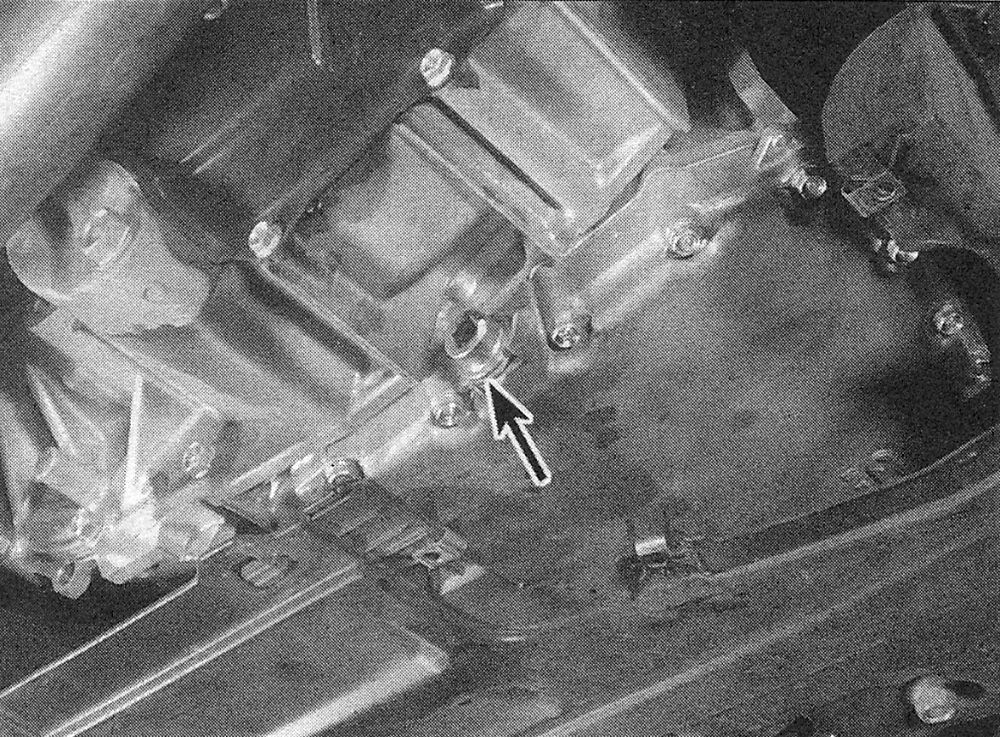Automatic transaxle fluid change
1. The automatic transaxle fluid should be changed at the recommended intervals.
2. Before beginning work, purchase the specified transmission fluid (see Recommended lubricants and fluids in this Chapter’s Specifications).
3. Other tools necessary for this job include jack stands to support the vehicle in a raised position, wrenches, a drain pan, newspapers and clean rags.
4. The fluid should be drained immediately after the vehicle has been driven. Hot fluid is more effective than cold fluid at removing built up sediment.
Warning: Fluid temperature can exceed 350-degrees F in a hot transaxle. Wear protective gloves.
5. After the vehicle has been driven to warm up the fluid, raise the front of the vehicle and support it securely on jack stands.
Warning: Never work under a vehicle that is supported only by a jack!
6. Place the drain pan under the drain plugs in the transaxle pan and remove the drain plug (see illustration). Be sure the drain pan is in position, as fluid will come out with some force. Once the fluid is drained, reinstall the drain plug securely. Measure the amount of fluid drained and write down this figure for reference when refilling.
i.6 Location of the automatic transaxle fluid drain plug

7. Lower the vehicle.
8. With the engine off, add new fluid to the transaxle through the dipstick tube (if equipped) or the fill plug (see illustration 4.32b) (see Recommended lubricants and fluids for the recommended fluid type). Begin the refill procedure by initially adding 1/3 of the amount drained. On non-CVT models, with the engine running, add 1/2-pint at a time (cycling the shifter through each gear position between additions) until the level is correct on the dipstick. On CVT models, see Fluid level checks for the fluid level adjustment procedure.
9. If desired, repeat Steps 5 through 8 once to flush any contaminated fluid from the torque converter.
10. The old fluid drained from the transaxle cannot be reused in its present state and should be disposed of. Check with your local auto parts store, disposal facility or environmental agency to see if they will accept the fluid for recycling. After the fluid has cooled it can be drained into a container (capped plastic jugs, topped bottles, milk cartons, etc.) for transport to one of these disposal sites. Don’t dispose of the fluid by pouring it on the ground or down a drain!